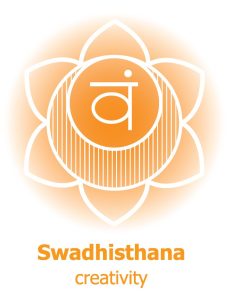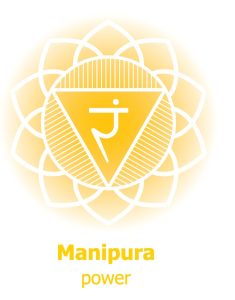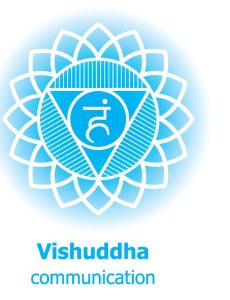Watch the first lesson Part-1 where Dr. Michele Arnold explains our thoughts, inner rage, and how it affects us physically, mentally, and spiritually.

Have you heard of Chakras and Mind-Body Medicine before? If not, don’t worry, I will explain what they are. If you have, then would you like to know how addressing the Chakras and Mind-Body Medicine can help you feel better?
Because we will be talking about the Mind-Body connection, I will address the Chakras, and how they are responsible for storing inner rage, the root of all stress related disorder like:
- generalized anxiety
- mild depression
- insomnia
- Post-traumatic stress disorder (PTSD)
- Stress hormone imbalances like cortisol and adrenaline.
- Fears
- Negative mood
- Anger and irritability
- Chronic pain
Let’s begin by looking at the benefits of Mind-Body Medicine.
How Can Mind-Body -Spirit Medicine Help Me?
To understand Mind-Body-Spirit Medicine let’s first understand the Chakra and Meridian systems. Balancing the Chakra centers and acupuncture meridians is a form of holistic medicine that treats the whole body by addressing the physical, mental, emotional-spiritual levels of a person. Many illnesses, and pain begin in the mental-emotional-spiritual levels. In other words, it is our thoughts, emotions, and deep belief systems that are the cause of disharmony in the body and mind. The thoughts, emotions, and negative beliefs become conscious or subconscious repressed rage.
This is mind-body-spirit medicine. Many healers will abbreviate leaving out the word “spirit” and understand that Mind-Body Medicine includes the spirit and emotions.
The negative thoughts, and subconscious repressed rage block circulation of Qi-energy and blood. This is often felt in the body as “Tension”. The thoughts send signals to glands, which release neurotransmitters. Neurotransmitters from the brain reduces oxygen to a tendon, muscle, joint, bone. It simply renders a tendon in the arm for example, slightly oxygen deprived, which results in pain. It is a protective maneuver. Tension or stagnation reduces oxygen flow to the muscles, nerves, and tendons.
Repressed rage is the root of all disharmonies in the mind-body causing a blockage of Qi and blood flow. This blockage equals congestion.
Thus, there is only one disease, congestion. Only one cure, circulation.” Traditional Chinese Medicine (TCM).
Many therapies are used to help bring balance to the Chakra-Meridian systems. This may be food therapy, herbal medicines, acupuncture, tuning fork acupuncture, sound healing, aromatherapy, essential oils, AromaTune, meditation, massage, exercise, and more. These therapies increase the flow of Qi-energy and blood circulation whereby they reduce pain, improve sleep, digestion, immunity, mood, activity level, energy level, mobility, focus, concentration, reproductive health, libido, skin, and overall outlook on life.
The best results from any of these therapies are achieved when a patient is also actively working on their own physical, mental, emotional-spiritual levels. You, as a patient can learn to use a few of these natural solutions to healthcare for yourself and your family.
I love to share information and provide education through classes, discussions, videos, Vlogs, podcasts, and webinars. My intention is to provide easy to follow guidelines to using essential oils, acupressure, tuning fork healing, food healing, and other natural healthcare tips that is enjoyable, so that you can feel empowered in your own healing journey. You will find this information on my holistic health channel, “Living Well With Dr. Michele”. Included on my channel is my “Chakra Series classes for Body Balancing Made Easy”.
You can learn more about my channel, and the Chakra Series by Clicking Here!
To fully appreciate the healing abilities of holistic therapies it is important to understand the Chakra-Meridian system’s influence on the whole person and releasing inner rage.
What are Chakras? How are they responsible for storing Inner Rage, the root of all stress related disorders and chronic pain?
First, what are Chakra Power Stations?
The chakra energy centers are power stations responsible for carrying or releasing stored energy, memories, emotional or physical trauma. They have a direct connection to our endocrine glands, release of hormones, and thoughts.
Like the brain and heart, which have measurable electrical energy, each chakra puts out an energy field extending out to and from the body at specific levels of the body.
There are 7 main chakras and 21 minor chakras (if we include the eyes and scapula there are 25). The chakras are the root, sacral, solar, heart, throat, brow, and crown. The minor chakras are bilateral consisting of the feet, hands, elbows, knees, groin-gonads, clavicles, intercostals, ears-jaw, shoulders, navel, and one spleen chakra found only on the left side below the rib cage. Some sources consider the eyes and scapula to be minor chakras as well.
Chakras are swirling vortexes of bio-electric energy located along our anterior midline and posterior spine. Some scientists call them psycho-neuro-endocrine centers (PNE). It’s easier to just call these energy centers chakras! In essence they are the power stations of our central nervous system.

Chakras are part of Ayurveda Medicine, from India. Hindu texts called Vedas first described Chakras more than 2000 years ago. Arthur Avalon, an Englishmen, first introduced them to the Western world in his book, “The Serpent Power”, a translation of Padaka-Pancaka and Sat-Cakra-Nirupana in 1919.
Traditional Chinese Medical and Ayurvedic Medical systems have much overlap that work together in harmony. Both reference vital energy called prana or Qi (Chi) energy that circulates throughout the body. The Prana or Qi energy flows within channels called meridians or nadis. These channels connect the chakras to each other as well as to organs, glands, tissues, and to every cell of the body. When this energy flow is blocked, or impeded illness may develop.
The 7 major chakras correlate to major acupuncture points along the midline of the body. Both systems help to stimulate, move, or clear blockages of negative energy.
Each of the main 7 chakras are associated with one of the nine endocrine glands, a group of nerves called a plexus, and a band of connective tissue called fascia.

From these Chakra centers and glands, neuropeptides are released in response to our thoughts and feelings. Thoughts and emotions of anger, joy, worry, grief, or fear have their own identifiable frequencies. That’s how your body knows which neuropeptide to release.
Whether pain or disease stems from an emotional or spiritual disharmony or not, both physical or emotional trauma as well as behavioral or mental habits are stored in our musculature, and connective tissue called fascia, creating tension, blocking circulation, which can lead to pain or disease. Sometimes it’s a direct connection from acute assault to the body or it develops over time.
Some people define this as stress, which is a physical, chemical, or emotional factor that causes bodily or mental tension. Stress can come from external physical trauma, overloading, repetitive strain, poor posture, contracted and inflexible muscles, lack of physical exertion, inflammation from poor diet, nutritional deficiencies, infections from bacteria, viruses, yeast, or fungi. There is also the mental aspect of overthinking, worry, anger, sadness, fear, negative outlook, and emotional imbalances. In a nutshell emotional repression of any kind leads to repressed rage.
Our chakras can become congested, over-stimulated or uncoordinated due to repressed rage. Changing negative thought patterns to more positive ones can help restore balance, clear blockages, stimulate underactive chakras, or calm over-stimulated areas. This does require soul searching, awareness as well as other life-style adjustments to stimulate healing of tissue at the cellular level. This addresses the root cause of disharmony.
Where Does Your Inner Rage Come From?
Thought patterns stem from our beliefs and values.
Physical pain, anxiety, depression are forms of survival patterns meant to buffer you from feeling the distress and rage directly. They become maladaptive coping mechanisms. We avoid or ignore distressful feelings. Often, we aren’t aware of our inner conflicts and fears. They are held in the subconscious mind.
Here are the five sources of inner rage:
- Anger, emotional pain, dependency needs, and sadness that can be traced back to childhood neglect, abuse, disapproval. It can also occur from abusive toxic relationships.
- Anger stemming from the self-imposed pressures to be perfect and good. Stems from deep feeling of inferiority, low self-worth, and need of approval.
- Self-denial, self-sacrifice to be good, to be accepted, to receive approval. Self-denial leads to feeling of regret, loss, disappointment, sadness, loneliness, resentment, and anger.
- Anger generated from the pressures of life. These are things like fear for personal safety, well-being, relationships, marriage, traffic, career, health, aging and mortality, financial security, and success.
- Miscellaneous things like guilt, shame, fear, insecurity, vulnerability, injustice, self-absorption, or extreme superiority can also feed the reservoir of rage along with the excessive need to be protected, and aware of surroundings.
Why Does this Happen?
Unpleasant thoughts and emotions may be pushed into the unconscious, as they would be difficult to bear. If we attempted to deal with them, it is possible that we would somehow become incapacitated in one of two ways.
- First, the id could take over, in which case angry, belligerent behavior would occur. You could become a ranting, raving lunatic, someone in need of a straitjacket. But behaving like that is not acceptable, so we push those thoughts away rather than act inappropriately and be ostracized (causing further reduction in self-esteem).
- Second, we could become paralyzed with grief, unable to function in the face of unpleasantness. But we don’t want that either, because then we’d be shirking our responsibilities.
Thus, your brain, thoughts, and nervous system trigger pain and illness
Pain is triggered from an unpleasant stimulus called noxious stimuli. Noxious stimuli (bad pain, and stressors) cause nerve endings to release neurogenic inflammatory chemicals like substance P, NKA, CGRP, and more.
Noxious stimuli can be in the form of:
- painful, hitting, slapping, pinching, kicking, hurling, strangling, shoving, or another similar stimulus.
- Any form of noxious, painful, or intrusive spray or chemical inhalant
- Any form of disgusting tastes
- Electric shock
- A hot surface
- Water spray to the face
- Deep muscle squeezes.
- Sharp poke, or stab.
- It induces a behavioral response to avoid the pain.
Constant negative thoughts and emotions are stored in our musculature, and connective tissue called fascia, creating tension, blocking circulation, which can lead to pain or disease.
- The mind and negative thoughts are thought to be a behavioral response to avoid negative feelings.
- These negative feelings stem from negative belief systems about ourselves.
The noxious stimuli and negative thoughts stimulate release of inflammatory chemicals as well as inducing a chronic “flight or fight” response in our sympathetic nervous system.
Sticky Pressurized Fluid Buildup
These chemicals create a thick viscous fluid that stick to the muscle. Thus, muscles can stick together. Then we develop maladaptation, contraction, or weakness. Then trophic changes occur called adhesions. Adhesions we can feel as knots, nodules, tight bands, grainy crystal-like nodules, rubbery nodules, and areas of tenderness.
Sticky fluid, and adhesions block flow of Qi-energy, blood, and lymph. The flow is suboptimal thick, slow, or completely blocked. Oxygen, nutrient delivery, and waste removal are subpar.
Noxious stimuli also increase sympathetic tone of the autonomic nervous system. This affects blood flow because it constricts and decreases oxygen transport to tissues.
We need to stop the neurogenic inflammation, unstick the tissue by cleaning the area.
Under healthy conditions, nerve endings, release water, proteins, and ions. Consistency is fluid like water. These are absorbed through muscle and pumped out.
Reverse the damaging process by engaging your energy power stations!
First, find a non-noxious stimulus that will signal release of good neurotransmitter’s that intercept nociception (pain) from ever reaching the brain. These good neurotransmitters are ones like dopamine, glutamate, and Gaba. An example of a non-noxious stimulus is sound healing from a tuning fork or chanting a sound using the power of your own voice. The sound and pressure from the tuning fork help release pressurized sticky fluid in the tissues. This leads to pain reduction, and increased mobility.
Next, address your core beliefs about yourself that are stored in your chakra energy centers.
Watch the video of lesson 2 Part-2 where Dr. Michele describes details of each chakra system.
CORE BELIEFS MAKE UP OUR ROOT ENERGY STATION
Our belief systems are stored in our first chakra center. A core belief is always an “I” statement as in “I am unlovable”. The thought “Nobody loves me” is called a ‘supporting belief’, a prediction or forecast about what others will do or have done to you, but it is there only because your core belief “I am unlovable” was already well established. Core beliefs come from family, school, friends, community, clubs, religion, church, and society, etc.
Because our survival instincts are associated with our core beliefs, which form the basis of our existence, and how we see, and interact with the world in which we live, it is important to identify negative beliefs and balance them with positive ones.
Beliefs about ourselves, about others, and even about our world influence…
- Life purpose and meaning
- Relationships
- Career and business
- Finances
- Health and aging
The Problem with False Core Beliefs
If beliefs are unbalanced or negative, the forecasts, predictions and prophecies will also be unbalanced, and inaccurate and will lead to misinterpretations, misunderstandings and setting up of a series of self-fulfilling prophecy or self-sabotage. Core beliefs about ourselves are also connected to our immune systems. When conflicting or false they…
- Weaken 1st energy center, and you lose power.
- Immune related conditions develop
- Susceptible to contagious and epidemic diseases
- Problems with lower leg, knee, feet, spine, bones, and shame
The details of How we develop our belief systems is beyond this article, but it is further explained in other teachings about each individual chakra.
Signs your chronic pain, illness, depression, anxiety, or insomnia is from inner repressed rage.
- Pain is all the time.
- Sleep is usually affected
- No distinct onset or mechanism, or the injury has healed.
- There may be a history of trauma, accident, work issues, financial strain, relationship issues, child rearing problems, loss of loved one, childhood issues, neglect, disapproval, physical or emotional abuse. PTSD.
- Pain is described as “everywhere”.
- Hypersensitivity to pain. Though, you may even describe yourself as tough, and that you have a strong pain threshold while at the same time describing all your fibromyalgia, IBS, migraine, insomnia, anxiety, depressive, or arthritis symptoms.
- There are multiple symptoms, pain in different places.
- Nothing makes it better-the pain is, “the same”.
- Temporary relief. If there is relief, it often returns. A sign of psychosomatic pain.
- Often associated with psycho-emotional characteristics
- A repressed fear of healing, or fear of not having any pain. There is something you want to avoid, something you don’t want to do like go to work, something you dislike, or don’t want to face. Fear of change.
- In joints: redness, swelling, tenderness. Usually, bilateral.
- Worsens or is initiated by hearing results of imaging like X-rays, or MRI, CAT scans that show wear and tear, degenerative processes, cartilage damage, bulging disc, spinal stenosis, osteoarthritis, bone spurs (osteophytes), etc.
- Worsens or is initiated when offered treatments like surgery, nerve ablation, trigger point injections, medications, pain relievers, sleep aids, anti-depressants, anti-anxiety medications, etc. These may give temporary relief, but the pain often returns, or returns to a different location.
- Because sympathetic nervous system is elevated the parasympathetic cannot function in rest mode.
- You Cannot be nervous and relaxed at the same time.
What is not considered chronic systemic, or psychosomatic pain:
- Excluding birth defects,
- Acute physical traumas,
- Life or limb threatening emergencies
- vaccinations,
- lack of water,
- lack of food or nutrients,
- Drug reactions, surgeries, or other iatrogenic causes
Recognize that the pain is a reaction to a psychological state and that the tendency to have the physical reactions and its equivalents is universal and a normal component of everyday life. It doesn’t mean you have a mental illness. Psychosomatic pain means you have real pain, and possibly real changes and degeneration in the tissues that began in the mental-emotional-spiritual levels. The root causative factor is repressed rage in the mental-emotional-spiritual levels.
For a person who has a mental-illness, or who believes she/he may have a mental-illness, then treatment should always include co-treatment with a licensed therapist, counselor, or psychologist. Mind-body therapies, techniques, acupuncture, sound healing, etc. does not replace Western medical care from a licensed medical doctor, or psychologist when needed.
EACH CHAKRA STATION IS RESPONSIBLE FOR SPECIFIC GLANDS, HORMONES, EMOTIONS, AND ORGAN FUNCTION.
TAKE A LOOK AT AN OVERVIEW OF EACH ONE TO SEE WHEN TO ADDRESS EACH ONE.
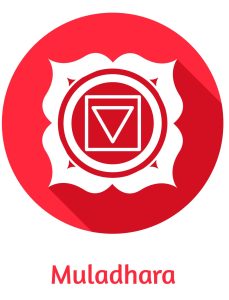
- Root Chakra and Your Cells. Surviving your tribe, the root of your belief systems. This Chakra is located at the base of the spine or tailbone, and perineum. It is coupled with the color red.
Root Chakra-Physical Complaints of Lumbar, Knee, Foot Pain. Energetic Qualities are expressed as fear, shock, deep emotional wounds, and not feeling grounded. It is responsible for the following:
- Cellular DNA & Cancer Support
- Bones, & Joints
- Adrenals, Kidneys and Bladder Meridians
- Liver and Gall Bladder Meridians and the perineum.
2. Sacral Chakra and The Power of Choice, Sexuality, Body image, Creative Energy, Reproduction and Aging.
It is in the lower abdomen about 2 inches below your belly button. It is associated with orange and is often called the pleasure seeker.
The sacral chakra is identified with our feelings of abundance and our sexuality.
Emotional spiritual issues involve envy, jealousy, lust, promiscuity, body dysmorphia, low self-esteem, poor communication, depression, pleasure, and enjoyment.
Sacral Chakra-Physical Complaints of Sacral, Hip, Groin, Gynecological, Low Libido, Or Urological Problems. Energetic Expressions are co-dependence, unable to show feelings, low affect, shame, selfishness.
- Infertility, Gynecological and Menstrual Disharmonies
- Menopause Symptoms and signs of aging
- Prostate Health
- Solar Plexus-Personal Power and Intention. Digestion and Metabolism
This is found in the upper abdomen or stomach region. It is tied with yellow, like the stomach channel. It is the power driver and is all about self-confidence and self-esteem. When congested spiritual disharmony creates obsessive-compulsiveness, expecting the worst.
Other emotional-spiritual aspects are worry, anxiety, feeling of “butterflies in stomach”, depression, pity, panic, claustrophobia, reluctance to change, rigid thoughts and belief systems.
Solar Plexus-Physical Complaints of Indigestion, Diabetes, Arthritis, IBS, Liver Disease, Peptic Ulcer, Gall Stones, Leg and Arm Pain. Psycho-Emotional Disturbances Show as Food or Money Issues, Obsessive-Compulsive, Judgmental, Critical, Overthinking.
- IBS, GERD, Chron’s, UC, Diabetes, Weight control.
- Arthritis, Auto-immune disorders

4. Heart Chakra-Power of Love, the Gateway to Healing. Circulatory and Immunity. This chakra is all about love. When balanced, we open ourselves to love and being loved. This space is linked with green or pink. It is the foundation for inner peace and joy. It is located in the center of the breastbone midway between the nipple line.
The emotional-spiritual aspects of the heart chakra are tearfulness, anxiety, depression, crying easily, nervous breakdown, detachedness, euphoria, self-pity, inability to show or receive love, irresponsible, amoral individual, falling in love is “sheer bliss”, overzealous, giggler, introversion, apathy, despondent.
Heart Chakra-Physical Complaints of Heart Disease, Angina, Coughing, Neck Pain, Upper Back, Scapular Pain, Knee and Elbow Pain. Psycho-Emotional Pain Can Show as Insomnia, Poor Memory, Apathy, Over Talkative, Feeling Isolated, Feeling Unloved, Lacking Compassion.
- Immune system, cardio-vascular, heart disease, angina
- poor memory, insomnia
- allergies,
- benign tumors and growths.
- Throat Charka-Power of Expression and communication. Lungs & Respiratory
It is located at the suprasternal notch at the base of the throat. This space is one of communication. Its color is blue, and it deals with the truth spoken and secrets kept.
The throat chakra is associated with the endocrine gland thyroid, and parathyroid. Structurally it is located at the spinal level or dermatomal nerve roots of the inferior brachial, cervical, and pharyngeal plexuses. These are responsible for functional and structural aspects of shoulders, cervical spine, neck, thumbs, pharynx, larynx, trachea, throat, mouth, teeth, gums, and esophagus.
Throat Chakra-Pain and Illness Shows Up in Shoulders, Lungs, Thyroid, Abdomen, And Ears. When Imbalanced There Is Shyness, Stuttering, Inability to Express Yourself, Feeling as If You’re Not Heard.
- Thyroid, shoulders, throat, cough, inspiration,
- Asthma,
- Skin & Hair
- Brow Chakra-Power of Intuition, Understanding, Service to others. ANS, Vegas Nerve. You will find this place on your forehead in the center between your eyes. When strengthened you increase your intuition and imagination. Indigo is the special color indicative of this chakra.
The emotional-spiritual aspects related to the brow chakra are anger, rage, indecision, indifference, lack of moral courage, discontentment, insight, perception, personality, and intuition. Brow Chakra Physical Pain or Illness Is Expressed as Sinus Problems, Skin Irritation, Headaches, Left Eye Problems, OCD, Stomach Ulcers. Psychological-Emotional Imbalance Is Seen as Forgetful, Fearful, Doubtful, Overly Logical, Superstitious, Oversensitive, Manipulative, Or Spacey.
- Eyes, Ears, Head, Intelligence, cognitive abilities, OCD, Alzheimer’s,
- Migraine, skin irritations, sinus problems.
- Pituitary, Hypothalamus, Thalamus
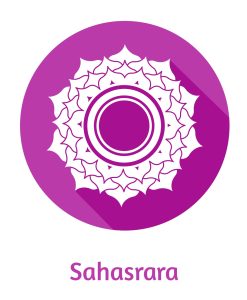
- Crown Chakra-Power of Faith, Spirituality, Relationship with God. Brain and CNS.
It is found on the top of the head and relates to the color violet or white light.
It is the center of beauty and bliss and connection with the divine and spirituality.
It relates to the pineal gland, and the secretion of melatonin, which helps regulate circadian rhythms.
Emotional-spiritual aspects when imbalanced appear as melancholy, depression, phobias, delusion, illusion, pride, arrogance, or lack of spiritual awareness. Crown Chakra-Physical Problems and Illness Affects the Right Eye, Blood Pressure, Kidneys. Emotional-Psychological Disharmonies Exhibit as Substance Abuse, Alcoholism, Shame, Self-Denial, Negative Self-Image, Feeling Disconnected from Spirit, Overly Erotic, Over Imagination, Craving Sympathy.
- Pineal gland, insomnia, blood pressure high or low, alcoholism, substance abuse, addictions, mental health disorders or headaches, vertigo, tinnitus, right-sided migraine,
- upper motor neural condition (multiple sclerosis for example),
- problems with right eye,
- brittle nails, dull hair, visual perception (eyesight), and seasonal affect disorder.
What can you do to support your energy centers?
Although Invisible, the Meridians and Chakras are essential to keep the body functioning and alive. If we don’t recognize the energetic patterns of dysfunction at these levels, and treat accordingly, we are not able to heal effectively, and entirely.
There are natural ways to balance and stimulate your emotional-spiritual aspects as well as your nervous and endocrine system using the chakras and acupuncture points. A few examples are sound healing, tuning forks, crystal bowels, Tibetan singing bowels, crystals, chanting, acupressure, acupuncture, moxibustion (burning of mugwort), color light therapy, micro-current electronic acupuncture, yoga, or meditation.
Pursue your own mind-body health by scheduling your appointment today!
Click here to book your appointment
Take your healing to new heights-Become a member of my Holistic Health Channel, “Living Well With Dr. Michele”.
In health and healing,
Dr. Michele Arnold-Pirtle
Sources
Angel, Barbra (Romanowska, Barbara). (2014). Tune & Heal: In-depth cellular music therapy, Simple techniques for healing the Body, Mind, and Spirit with Sound. Translation Polish to English: Blaszczak (Sendi), A. and Choi, C. Ed. Johnston, D. and Larson, D. Published on Create Space.
Arnold-Pirtle, M. (2018). Ancient Healing for Modern People: Food, Herbs & Essential Oils to Detox, Cleanse & Rejuvenate the Body, Mind & Soul. Poway, CA. Total Health Acupuncture.
Becker, R. and Selden, G. (1985). The Body Electric: Electromagnetism and The Foundation of Life. New York: Marrow and Company, Inc.
Beaulieu, John (2010). Human Tuning: Sound Healing With Tuning Forks. Biosonic Enterprises, Ltd. New York.
Cross, John R. (2008). Acupuncture and the Chakra Energy System. Treating the Cause of Disease. Berkley, CA. North Atlantic Books.
Frawley, D., Ranade S., and Lade A. (2003). Ayurveda and Marma Therapy: Energy Points in Yogic Healing. Twin Lakes, WI. Lotus Press.
Kendall, D. (2002). DAO of Chinese Medicine: Understanding An Ancient Healing Art. Oxford: Oxford University Press.
Keown, D., M.B., Ch.B., L.Ac. (2014). The Spark in the Machine: How the Science of Acupuncture Explains the Mysteries of Western Medicine. London & Philadelphia: Singing Dragon.
Maman, Fabian. The Role of music in the twenty-first century. Redondo Beach, CA.: Tama-Dõ Press, 1997.
Sankey, M. (1999). Esoteric Acupuncture, Gateway to Expanded Healing, Volume I. Mountain Castle Publishing. Inglewood, CA.
Sankey, M. (2002). Discern the Wisper. Esoteric Acupuncture, Vol. II. Mountain Castle Publishing. Inglewood, CA.
Sankey, M. (2003). Climbing Jacob’s Ladder, Volume III. Mountain Castle Publishing. Inglewood, CA.
Sarno, John E. (2006). Epub Edition (June 2007). The Divided Mind: The Epidemic of Mindbody Disorders. HarperCollins ebook. Harper Collins Publishers Inc. New York, NY;London, UK; Auckland, New Zealand; Toronto, ON; Sydney, Australia.
Starwynn, D. (2013). Healing the Root of Pain: A Non-Drug Solution for Depression, Anxiety, and Chronic Pain Using the Power of Vibrational Medicine. Desert Heart Press. Phoenix, Az.
Starwynn, D. (2019). Speaking the Body’s Language. Educational Workshop Notes and Personal Conversation. Los Angeles, CA.
Starwynn, D. (2017). Reclaiming Your Calm Center: Transform Inner Pain To Inner Peace By Turning Down The Noise In Your Mind. Tiburon, CA. Desert Heart Press.
Svoboda, R., and Lade A. (1995). Tao and Dharma. Chinese Medicine and Ayurveda. Twin Lakes, WI. Lotus Press.
Tennant, Jerry MD, MD (H), PSc., D. (2013). Healing is Voltage: The Handbook. 3rd Ed. Published by www.tennantinstitute.com
Various forms of sound frequencies have been used in Western medical settings for years. Sound for medical healing is continually researched.
Take a look at the following references.
For tumor reduction:
Wan GY, Liu Y, Chen BW, Liu YY, Wang YS, Zhang N. Recent advances of sonodynamic therapy in cancer treatment. Cancer Biol Med. 2016;13(3):325‐338. doi:10.20892/j.issn.2095-3941.2016.0068
Abstract
Sonodynamic therapy (SDT) is an emerging approach that involves a combination of low-intensity ultrasound and specialized chemical agents known as sonosensitizers. Ultrasound can penetrate deeply into tissues and can be focused into a small region of a tumor to activate a sonosensitizer which offers the possibility of non-invasively eradicating solid tumors in a site-directed manner. In this article, we critically reviewed the currently accepted mechanisms of sonodynamic action and summarized the classification of sonosensitizers. At the same time, the breath of evidence from SDT-based studies suggests that SDT is promising for cancer treatment.
McHale AP, Callan JF, Nomikou N, Fowley C, Callan B. Sonodynamic Therapy: Concept, Mechanism and Application to Cancer Treatment. Adv Exp Med Biol. 2016;880:429‐450. doi:10.1007/978-3-319-22536-4_22
Abstract
Sonodynamic therapy (SDT) represents an emerging approach that offers the possibility of non-invasively eradicating solid tumors in a site-directed manner. It involves the sensitization of target tissues with a non-toxic sensitizing chemical agent and subsequent exposure of the sensitized tissues to relatively low-intensity ultrasound. Essentially, both aspects (the sensitization and ultrasound exposure) are harmless, and cytotoxic events occur when both are combined. Due to the significant depth that ultrasound penetrates tissue, the approach provides an advantage over similar alternative approaches, such as photodynamic therapy (PDT), in which less penetrating light is employed to provide the cytotoxic effect in sensitized tissues. This suggests that sonodynamic therapy may find wider clinical application, particularly for the non-invasive treatment of less accessible lesions. Early SDT-based approaches employed many of the sensitizers used in PDT, although the manner in which ultrasound activates the sensitizer differs from activation events in PDT. Here we will review the currently accepted mechanisms by which ultrasound activates sensitizers to elicit cytotoxic effects. In addition, we will explore the breath of evidence from in-vitro and in-vivo SDT-based studies, providing the reader with an insight into the therapeutic potential offered by SDT in the treatment of cancer.
Yang Y, Tu J, Yang D, Raymond JL, Roy RA, Zhang D. Photo- and Sono-Dynamic Therapy: A Review of Mechanisms and Considerations for Pharmacological Agents Used in Therapy Incorporating Light and Sound. Curr Pharm Des. 2019;25(4):401‐412. doi:10.2174/1381612825666190123114107
Abstract
As irreplaceable energy sources of minimally invasive treatment, light and sound have, separately, laid solid foundations in their clinic applications. Constrained by the relatively shallow penetration depth of light, photodynamic therapy (PDT) typically involves involves superficial targets such as shallow seated skin conditions, head and neck cancers, eye disorders, early-stage cancer of esophagus, etc. For ultrasound-driven sonodynamic therapy (SDT), however, to various organs is facilitated by the superior… transmission and focusing ability of ultrasound in biological tissues, enabling multiple therapeutic applications including treating glioma, breast cancer, hematologic tumor and opening blood-brain-barrier (BBB). Considering the emergence of theranostics and precision therapy, these two classic energy sources and corresponding sensitizers are worth reevaluating. In this review, three typical therapies using light and sound as a trigger, PDT, SDT, and combined PDT and SDT are introduced. The therapeutic dynamics and current designs of pharmacological sensitizers involved in these therapies are presented. By introducing both the history of the field and the most up-to-date design strategies, this review provides a systemic summary on the development of PDT and SDT and fosters inspiration for researchers working on ‘multi-modal’ therapies involving light and sound.
- For mood, anxiety, and mind.
Goldsby TL, Goldsby ME, McWalters M, Mills PJ. Effects of Singing Bowl Sound Meditation on Mood, Tension, and Well-being: An Observational Study. J Evid Based Complementary Altern Med. 2017;22(3):401‐406. doi:10.1177/2156587216668109
Abstract
Poor mood and elevated anxiety are linked to increased incidence of disease. This study examined the effects of sound meditation, specifically Tibetan singing bowl meditation, on mood, anxiety, pain, and spiritual well-being. Sixty-two women and men (mean age 49.7 years) participated. As compared with pre-meditation, following the sound meditation participants reported significantly less tension, anger, fatigue, and depressed mood (all Ps <.001). Additionally, participants who were previously naïve to this type of meditation experienced a significantly greater reduction in tension compared with participants experienced in this meditation ( P < .001). Feeling of spiritual well-being significantly increased across all participants ( P < .001). Tibetan singing bowl meditation may be a feasible low-cost low technology intervention for reducing feelings of tension, anxiety, and depression, and increasing spiritual well-being. This meditation type may be especially useful in decreasing tension in individuals who have not previously practiced this form of meditation.
- For pain relief.
Lim E, Lim R, Suhaimi A, Chan BT, Wahab AKA. Treatment of chronic back pain using indirect vibroacoustic therapy: A pilot study. J Back Musculoskelet Rehabil. 2018;31(6):1041‐1047. doi:10.3233/BMR-171042
Objective: This 12-week pilot study examines the efficacy of applying low frequency sound wave stimulation (between 16-160 Hz) through both hands and feet on relieving pain and improving functional ability in patients with chronic back pain.
Results: At week 12, significant reductions in pain sensation and pain-related disability were observed, with mean reductions of 3.5 points in P-VAS and 13.5 points in the PDI scores. Sixty-five percent of the participants had a reduction of at least 3 points on the P-VAS score, while 52% participants showed a decrease of at least 10 points in the PDI score. Significant improvement was observed in the SF-12 physical composite score but not the mental composite score.
Conclusions: The preliminary findings showed that passive application of low frequency sound wave stimulation therapy through both hands and feet was effective in alleviating pain and improving functional ability in patients with chronic back pain.
- For determining fractures. Useful for physical trainers!
uning forks in determining fractures. https://www.ncbi.nlm.nih.gov/pmc/articles/PMC5076288/

